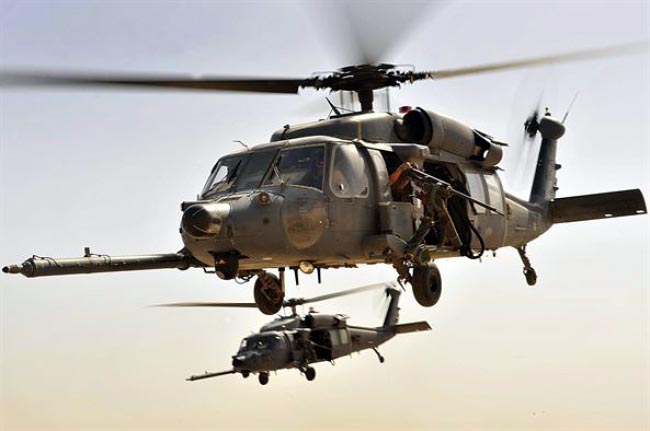Although the US and alliance forces have been working to develop the Afghan Air Force (AAF) for more than a decade now, the AAF has still not been enabled to reach a stage whereby it could take on the security role being fulfilled by US and coalition forces. The force’s accomplishments and achievements are hailed but control of the aircrafts is not being fully handed to Afghans. The AAF has been many times lauded as unique force in the region with a mighty and young force; however, it is still unable to carry out operations solely.
Since its inception in 1924 under the reign of King Amanullah Khan, the elite Afghanistan Air Force (AAF) has went through many ups and downs throughout the war-weary Afghan history. The 95-year-old AAF was once powerful on regional level having 240 different types of military aircrafts, 40 logistic aircrafts and 150 cargo planes. When the United States invaded Afghanistan in 2001, Afghan air combat capability had atrophied; whereas, the AAF was in its heyday in the 1970s, when it was the beneficiary of Russian training and equipment.
The force was again paid attention in 2007 after its complete extinction during the 1990s civil war and the following era of the US-led invasion of Afghanistan in 2001. Since the beginning of its revival efforts, the force has been gaining strength. NATO’s Train, Advise, Assist Command-Air (TAAC-Air) mission in Afghanistan promises that under current plans, NATO wants to boost the size of the AAF from 8,000 to 12,000 troops and grow its inventory from 124 to 259 aircrafts as part of recapitalization. Meanwhile, President Ashraf Ghani lauds the force which he says will be tripled soon under the four-year security plan for Afghanistan that includes strengthening the air force as a strategic force to ensure the security of the country.
However, in an assessment -- conducted between March and August 2017 -- released on January 4, the Pentagon’s top watchdog is highly critical of NATO-led, US-supported efforts to improve and expand the AAF. The review acknowledges that Afghanistan’s air arm has improved in some respects, but criticizes significant gaps in training and logistical support to the air force. The assessment adds that coalition advisers are not adequately prepared for the tasks at hand. It is very bewildering as the assessment puts down that the international efforts still lacks a coherent and overarching strategy.
This is while Brig. Gen. Phillip Stewart, the U.S. Air Force commander in charge of NATO’s TAAC-Air mission in Afghanistan, says that over the six years to come, the US military and its coalition partners will invest $7 billion to augment the AAF, including a more than twofold increase to the country’s aircraft fleet. It is not clear yet how the promise made by the international fraternity could be honored in a situation when there are huge gaps in training and logistical supports to the forces.
In order to avoid civilian and reduce military causalities, Afghan forces should unquestionably maintain a strong air force. Given the vast distances and rugged terrain of Afghanistan, flying is quicker and safer for chasing down insurgents on the condition that the aircrafts are manned by only Afghan airmen. With full control at disposal, Afghans will act as eagles in hunting terrorists sent from their well-known hotbeds across the imaginary borderline. However, during many air operations, the Afghan talented youth are not given the opportunity. The airstrikes are conducted merely by foreign pilots that, as we have witnessed, are faulty and almost always cause collateral damage.
The flawed airstrikes have many factors but communication problem is a case in point. The foreigners flying the jets have difficulties while receiving the coordinates of a place from ground forces; because they include foreigners from various NATO-member countries speaking different languages. As misinterpretation problem occurs; the air raids result in failure.
When the Afghans are granted full control and the foreign advisors asked to pay serious heed to the training sphere, there will be meager chances of mistaken operations and the so-called friendly fire. Because Afghans know their territories well than anybody else, so they know the exact hideouts of rebels. In addition, the air-ground integration and coordination between the Afghan National Army on the ground and the AFF in air would be very effective in carrying out successful operations.
At this stand, the AAF -- as acknowledged by the US top military commander in Afghanistan, Gen. Nicholson -- is a grand force in the region and the Afghan talent is known around the globe. Therefore, the force should be entrusted with full access to aircrafts. Also more airmen should be sent to various countries for studies and receiving trainings.
Moreover, the TAAC-Air mission in Afghanistan should focus more on training and meeting the logistical needs of the AAF and it should have a coherent and clear strategy for materializing its claim of helping the AAF to reach full strength over the next few years. The donor countries must provide more gunships and aircrafts in order to fully equip the force.
Since a high level delegation from the United Nations Security Council (UNSC) is in Kabul to assess the progress of war in Afghanistan, it is duty of the Afghan government to highlight the importance of a strong Afghan air force against the complexity in the war on terror. The Afghan government and politicians should clearly tell the members of the delegation that foreign support of terrorists fighting the Afghan security forces is no more a secret.
In presence of foreign support of terrorists, I recommend to the Afghan government to pay more attention to the AAF in order to be victorious against insurgents, defend its borders and be able to maintain its territorial integrity with minimum civilian and military causalities.
Home » Opinion » Only Strong Afghan Air Force Can Guarantee Winning the War on Terror
Only Strong Afghan Air Force Can Guarantee Winning the War on Terror
| Sayed Niyam Alami

